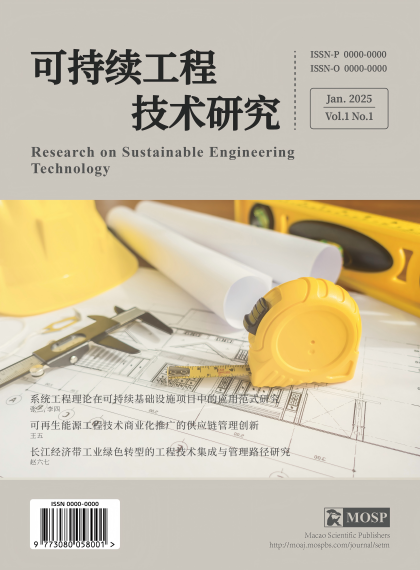摘 要:
纳米材料因其独特的物理化学性质,在环境修复领域展现了广阔的应用前景。本文聚焦纳米材料在土壤修复中的迁移转化机制,通过实验研究和理论分析结合的方法,探讨纳米材料在土壤孔隙中的扩散、吸附及转化行为。研究证明,纳米材料在土壤中的迁移与土壤颗粒组成、孔隙结构及表面化学特性密切相关,且土壤酸碱度、温度和水动力条件对迁移转化过程具有显著影响。结果表明,应用适宜设计的纳米材料能够有效增强土壤中污染物的去除效率,同时降低二次污染风险。该研究深化了对纳米材料作用机制的认知,为纳米技术在环境修复尤其是土壤污染治理中的应用提供了重要理论依据和实践指导。
关键词:纳米材料;土壤修复;迁移转化机制;土壤孔隙结构;环境污染治理
Abstract:
Nanomaterials, due to their unique physicochemical properties, have demonstrated broad application prospects in the field of environmental remediation. This paper focuses on the migration and transformation mechanisms of nanomaterials in soil remediation. By combining experimental research with theoretical analysis, it explores the diffusion, adsorption, and transformation behaviors of nanomaterials within soil pores. The study reveals that the migration of nanomaterials in soil is closely related to soil particle composition, pore structure, and surface chemical properties. Additionally, soil pH, temperature, and hydrodynamic conditions significantly influence the migration and transformation processes. The results indicate that the application of appropriately designed nanomaterials can effectively enhance the removal efficiency of pollutants in soil while reducing the risk of secondary pollution. This research deepens the understanding of the action mechanisms of nanomaterials and provides important theoretical foundations and practical guidance for the application of nanotechnology in environmental remediation, particularly in soil pollution control.
Keywords: Nanomaterials; Soil remediation; Migration and transformation mechanisms; Soil pore structure; Environmental pollution control
--
